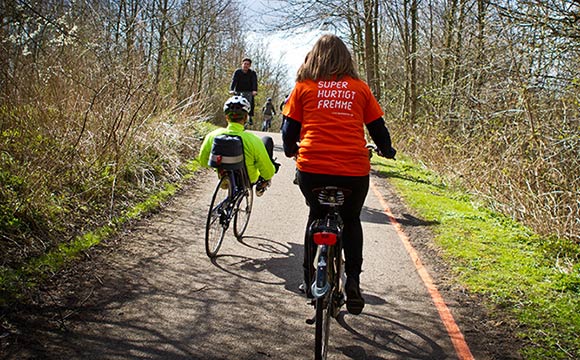
Want to build a bikeable city? Focus on those who don’t bike
There are plenty of good reasons to plan cities so they attract more bikes and fewer cars. But according to 8-80 Cities Executive Director Gil Penalosa, many cities are going about it the wrong way. RELATED LINKS
“No excuses: The myths vs. facts of building livable cities” by Andrew Sherry on Knight Blog (2/4/2015)
“The first rule of livable cities: pedestrians first” by Andrew Sherry on Knight Blog (10/08/14)
“Creating a more connected Charlotte, N.C.” by Susan Patterson (09/09/14)
“Does placemaking help democracy?” by Andrew Sherry on Knight blog (08/29/14)
“Study tour gets street-level view of how Copenhagen reinvented itself” by Andrew Sherry on Knight blog (08/25/14)
“‘Knight Cities’- A conversation with Gil Penalosa on building better communities” by Carol Coletta on Knight blog (08//20/14)
“Teams from Knight communities to travel Scandinavia on livable cities tour” by Carol Coletta on Knight blog (07/25/14)
Those reasons include the fact that biking helps fight two 21st century plagues: gridlock and obesity. What’s more, better paths for bikes and pedestrians will reduce traffic deaths for both. Not to mention that biking is cheaper than driving and requires no gasoline.
Yet many cities “are investing in the 2 percent who already bike, not the 98 percent who don’t,” said Penalosa, citing trail maps, bike parking, racks on buses and lines on streets. These are all well and good, but the only thing that will attract new riders is making them feel safe on the road.
That in turn takes two things: slowing speeds down to 20 mph or less, and separating bike lanes from roadways with raised curbs, planters or dedicated streets.
An 8-80 Cities study tour to Copenhagen, Denmark, sponsored by Knight Foundation, saw the fruits of this approach, as streams of cyclists commuted to work, mostly on upright three-speed bikes, and mostly wearing their work clothes, including women in skirts and heels. Others pushed or pulled wagons with small children inside, the Danish equivalent of the minivan.
“Bicycling is just a more efficient form of walking,” said Penalosa. “If you have to go 1 kilometer, you walk; if you have to go 5 kilometers, you bike.”
Copenhagen is taking it even further, having just opened its first “Cycle Super Highway” from the suburbs. Electric bikes are allowed, as long as the motors only assist pedaling.
Knight Foundation is interested in Penalosa’s work and lessons from cities such as Copenhagen because making communities more livable is a way to attract and retain talent, create economic opportunity, and foster engagement, key factors in the success of cities. Currently, the foundation is running the Knight Cities Challenge to uncover ideas that harness those elements.
The critical role of public transport
8-80 Cities does not advocate cities with only pedestrians and bikes, but rather a mix of modes. Many people will still have cars, but perhaps share them or use them differently, for example only on weekends. What’s critical to that mix is good public transportation.
- Public transit should be comfortable, affordable and efficient. But that’s not all.
- Public transit should be accessible from all parts of the city, to give people choice.
- Public transit should be attractive. For example, when a bus is designed to look like a trolley, people have more positive reactions.
- Public transit should send a message that those who ride it are important.
- Copenhagen has a range of public transport options, but high-speed buses with dedicated lanes are the most cost-efficient way to deliver mass transit in many cities.
Even with all the choices of transportation, half of commuters in Copenhagen bicycle to work. The most commonly cited reason is not environment, health or money. “It’s convenience,” says Penalosa. “It’s the fastest way to get to work.”
Andrew Sherry is vice president of communications at Knight Foundation.
What’s your best idea to make cities more successful? The Knight Cities Challenge offers applicants a chance to share in $5 million by focusing on that question. The contest will test the most innovative ideas in talent, opportunity and engagement in one or more of 26 Knight Foundation communities. The challenge is open for entries through 5 p.m. Eastern Time Nov. 14, 2014. Apply at KnightCities.org.
Photo: Denmark’s ‘Bicycle Super Highway.’ Source: Denmark.dk.
Recent Content
-
Communitiesarticle ·
-
Communitiesarticle ·
-
Communitiesarticle ·


